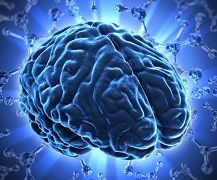Article
Positive Outcomes with Transcranial Magnetic Stimulation for Major Depression
Author(s):
Study results indicate that low-field magnetic stimulation synchronized to an individual's alpha frequency-dubbed "synchronized transcranial magnetic stimulation"-appears to be safe, effective, and well tolerated for treating major depressive disorder when properly administered.

Study results published in the July-August, 2015 issue of Brain Stimulation indicate that low-field magnetic stimulation synchronized to an individual’s alpha frequency (IAF)—dubbed “synchronized transcranial magnetic stimulation” ( sTMS)—appears to be safe, effective, and well tolerated for treating major depressive disorder (MDD) when properly administered.
For the 6-week, double-blind, sham-controlled treatment trial, more than 200 patients were analyzed at more than 15 of the nation’s top academic and private psychiatric institutions following randomization to a novel device that uses three rotating neodymium magnets to deliver sTMS treatment or sham treatment. Participants were both treatment naïve and treatment resistant, as prior exposure to antidepressant medication was not part of the trial’s inclusion criteria. All had baseline 17-item Hamilton Depression Rating Scale scores of 17 or greater.
“The study found sTMS therapy to be significantly more effective than sham when administered as intended, supporting the hypothesis that low-field magnetic stimulation improves depressive symptoms,” said principal investigator Andrew Leuchter, MD, professor of Psychiatry and director of the Neuromodulation Division in the Semel Institute at the University of California, Los Angeles. “Additional analyses found subjects who failed to benefit from or tolerate prior antidepressant treatment in the current episode were most likely to demonstrate significant benefit fromsTMS therapy compared to sham.”
No difference was observed between sTMS and sham in the study’s intent-to-treat sample. However, 34.2% of patients treated with active sTMS—when delivered accurately and consistently—achieved clinical response, compared with a rate of 8.3% for those in the sham group. The former group had a significantly greater average decrease in depression scores; among them, those with a history of poor response or intolerance to medication showed greater improvement with sTMS than did treatment-naïve patients.
Compared with sham treatment, sTMS displayed no difference in adverse events, and no serious adverse events were attributable to sTMS.
“These promising results indicate that sTMS is a promising novel technology for the treatment of depression,” said co-author Mark S. George, MD, distinguished professor of Psychiatry, Radiology, and Neurology at the Medical University of South Carolina, and the Editor-in-Chief of Brain Stimulation. “This technology is revolutionary in two ways over the current FDA-approved forms of TMS. First, this device tunes the stimulation to the patient's own brain rhythms. By stimulating at each patient's individual resonant frequency, sTMS may be able to achieve therapeutic success using lower energy. Second, this device is safe, easy to use, and portable, which would allow use in a wide variety of treatment settings. sTMS may expand the options we have for treating serious depression.”




